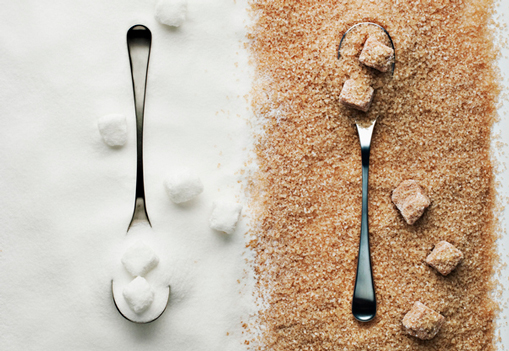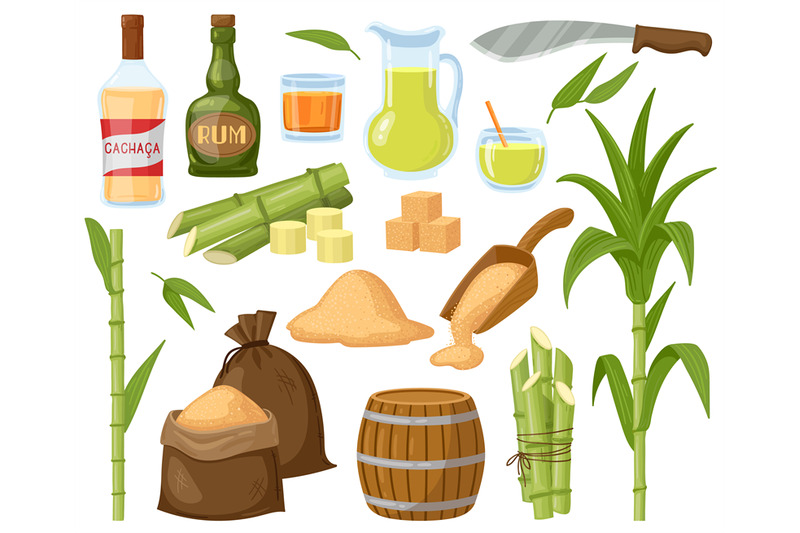How sugar cane products Are Influencing Trends in Renewable Energy
The Comprehensive Journey of Sugar Cane: Understanding Materials and Production Methods
The journey of sugar cane is an intricate procedure that starts in tropical areas with suitable growing conditions. Cultivation practices are made to make the most of yield and sustainability. Gathering approaches vary from traditional manual techniques to contemporary mechanical approaches. After harvest, sugar walking cane undergoes different processing stages to transform it into granulated sugar. This exploration reveals not just the details of production however additionally the more comprehensive effects for global markets and the atmosphere. What lies beyond this initial improvement?

The History of Sugar Cane Growing
Sugar walking stick growing days back thousands of years, its origins can be mapped to the exotic regions of Southeast Asia, where early farmers initially identified the plant's wonderful sap. This discovery caused the growing of sugar walking cane as a staple plant, gradually spreading to India and the Center East. By the very first millennium advertisement, sugar walking stick was being cultivated in these areas, where methods for drawing out and improving sugar were developed.The plant got importance in Europe during the Campaigns, as returning soldiers brought expertise of sugar production back home. By the 15th century, the establishment of sugar ranches started in the Caribbean, driven by the need for sugar in Europe. The transatlantic slave labor fueled this development, as enslaved labor was utilized to maximize production. Over centuries, sugar walking cane cultivation advanced, affecting economic climates and cultures worldwide, making it a substantial agricultural commodity.
Growing Conditions and Agricultural Practices
The effective growing of sugar cane counts heavily on certain growing problems and farming methods. Suitable temperatures vary in between 20 to 32 degrees Celsius, with well-distributed rainfall of 1,500 to 2,500 millimeters yearly. Dirt top quality is important; loamy or sandy soils, rich in organic matter, promote healthy and balanced growth.Farmers frequently employ different farming practices to boost yield. Crop turning and intercropping prevail methods to preserve dirt fertility and control parasites. Routine watering might be necessary in drier regions, making certain that the plants get adequate dampness. Fertilization, specifically with nitrogen and potassium, is vital for robust growth.Pest and weed administration methods, consisting of incorporated pest management (IPM), assistance to reduce losses. Sustainable practices, such as marginal husbandry and organic farming, are gaining grip amongst producers to secure the atmosphere. Collectively, these elements contribute considerably to the effective production of sugar walking cane.
Harvesting Techniques and Timing
In sugar walking cane production, the option between guidebook and mechanical harvesting considerably affects effectiveness and yield. Timing is likewise essential, as harvesting at the suitable minute warranties optimal sugar content and lessens losses. Recognizing these factors is necessary for successful sugar walking stick growing.
Handbook vs. Mechanical Harvesting
Collecting sugar walking cane involves 2 primary methods: guidebook and mechanical, each with distinct benefits and difficulties. Hands-on harvesting, generally carried out by workers making use of machetes, permits higher accuracy in cutting and minimizes damages to the plant. It is often favored in areas with uneven surface or where the plant is interspersed with various other plants, as employees can browse these intricacies more successfully. However, it is labor-intensive and taxing. Alternatively, mechanical harvesting utilizes specialized equipments to cut and accumulate the cane rapidly, enhancing efficiency and minimizing labor expenses. This technique is fit for large-scale operations but can result in higher plant damage and dirt compaction. Inevitably, the option in between handbook and mechanical harvesting relies on numerous aspects, including economic factors to consider and ecological conditions.
Optimal Gathering Timing
Picking the ideal moment to harvest sugar cane considerably influences both yield and top quality. Perfect gathering typically takes place when the walking cane gets to complete maturity, generally between 12 to 18 months after planting. At this phase, sucrose degrees optimal, guaranteeing the most effective sugar extraction prices. Climate condition also play an important duty; collecting throughout dry periods can Extra resources avoid damage to the cane and minimize soil compaction. Additionally, keeping track of the plant's shade and leaf decrease can indicate readiness, as a yellowing of the fallen leaves suggests that the walking stick is ripe. Timely harvesting is essential, as hold-ups can result in decreased sugar content and raised vulnerability to bugs and illness, inevitably influencing overall production efficiency.
Handling Methods: From Cane to Sugar
The handling of sugar walking cane entails important removal strategies that separate the juice from the coarse plant material. Following extraction, the refining procedure changes the raw juice right into taken shape sugar, guaranteeing pureness and quality. Recognizing these techniques is important for comprehending the journey of sugar from cane to last product.
Removal Methods Summary
Extraction methods play a considerable duty in transforming sugar walking stick into useful sugar. The cane is gathered and delivered to processing centers where it undergoes extensive cleaning to eliminate contaminations - sugar cane products. The following action involves squashing the cane making use of heavy rollers, which releases the juice consisting of sucrose. This juice is after that cleared up via the addition of lime and warm, allowing pollutants to resolve out. After explanation, the juice is evaporated under controlled temperatures to concentrate the sugar material. Ultimately, formation takes place, additional info where sugar crystals are developed as the concentrated juice cools down. These techniques ensure the effective extraction of sugar while preserving the top quality needed for further handling. Comprehending these methods is essential for understanding the general production of sugar from sugar walking cane
Refining Process Explained
Refining sugar from the drawn out juice is a crucial step that improves its purity and high quality. This process entails a number of phases, starting with information. The juice is warmed and treated with lime and various other representatives to get rid of pollutants, causing a more clear fluid. Next, the clarified juice goes through evaporation, where water is removed to concentrate the sugar web content. The concentrated syrup is then crystallized by cooling down, enabling sugar crystals to form. These crystals are separated from the remaining syrup, referred to as molasses, via centrifugation. The raw sugar is further refined through washing, filtering, and drying out, which gets rid of any type of remaining contaminations. Completion item is the granulated sugar generally used in homes and industries worldwide, ensuring uniformity and sweet taste.
Lasting Practices in Sugar Cane Production
Although sugar walking stick production has actually generally counted on intensive farming approaches, there is a growing focus on lasting practices that promote environmental health and economic practicality. Farmers are progressively adopting methods such as plant rotation, which enhances soil fertility and decreases parasite problems. Integrated pest management (IPM) is also obtaining grip, enabling for natural predators to regulate pest populations, thus reducing chemical pesticide use.In enhancement, advancements in watering approaches, such as drip watering, are being utilized to preserve water sources. Lasting land administration practices, including reduced tillage, assistance stop soil disintegration and keep biodiversity. Numerous producers are exploring organic farming approaches, which eschew synthetic fertilizers and chemicals altogether, fostering a healthier community.
The Worldwide Sugar Market and Economic Influence
Lasting practices in sugar cane production not just profit the environment yet likewise affect the characteristics of the worldwide sugar market. As customer demand shifts in the direction of ethically generated products, nations taking on sustainable techniques gain affordable benefits. This trend triggers significant sugar exporters, such as Brazil and India, to incorporate eco-friendly methods, therefore affecting worldwide prices and supply chains.Moreover, changes in production due to climate adjustment and ecological guidelines Related Site can create volatility in sugar costs, impacting economies reliant on sugar exports. Regions that spend in sustainable farming might experience improved yield stability, leading to better market positioning.Economic effects extend beyond private nations, as worldwide trade agreements and tolls form the competitive landscape. Eventually, the interaction in between lasting techniques and market dynamics underscores the value of flexible strategies in a swiftly transforming financial setting, influencing both manufacturers and consumers in the worldwide sugar market.
Innovations in Sugar Cane Application and Byproducts

As the demand for renewable resources expands, innovations in sugar walking stick usage and by-products are transforming the agricultural landscape. Researchers and business owners are checking out unique applications that prolong past traditional sugar production. One significant development is the conversion of bagasse, the fibrous deposit left after juice extraction, right into bioenergy and bioplastics (sugar cane products). This not just minimizes waste however additionally supplies lasting power options for handling facilities.In enhancement, advancements in fermentation modern technology have actually resulted in the production of biofuels, such as ethanol, from sugar cane, which adds to cleaner energy services. Furthermore, the extraction of molasses has actually opened up avenues for creating value-added products like animal feed and specialized spirits.These technologies not only enhance the financial feasibility of sugar cane farming however additionally promote ecological sustainability, making sugar cane a crucial plant in the shift towards a circular economy. The continuous exploration of its possible continues to generate encouraging results
Regularly Asked Questions
What Are the Health And Wellness Results of Consuming Sugar Cane Products?
The wellness impacts of consuming sugar walking stick products can differ. While they offer power and important nutrients, too much consumption might cause weight gain, increased blood sugar degrees, and a higher risk of oral problems. Moderation is crucial.
How Does Environment Adjustment Influence Sugar Cane Production?
Environment modification significantly impacts sugar walking cane production by modifying rainfall patterns and enhancing temperature levels. These modifications can result in reduced returns, boosted bug stress, and obstacles in preserving dirt health and wellness, ultimately affecting both high quality and amount of harvests.
What Is the Duty of Sugar Cane in Biofuel Production?
The role of sugar walking cane in biofuel production is considerable; it serves as an eco-friendly energy resource, converting sugars into ethanol. This process minimizes dependence on nonrenewable fuel sources and helps mitigate greenhouse gas discharges, advertising ecological sustainability.

Exist Any Kind Of Alternative Sweeteners Acquired From Sugar Cane?
Alternate sweeteners stemmed from sugar walking cane consist of molasses and walking cane sugar itself. These items supply sweetening choices while preserving some nutritional benefits, making them popular selections for consumers seeking natural options to synthetic sweeteners.
Exactly How Does Sugar Cane Farming Affect Resident Communities?
Sugar cane farming substantially impacts local neighborhoods by supplying work opportunities, increasing local economic situations, and affecting social structures. It can also lead to environmental issues and wellness concerns, necessitating a balanced approach to lasting techniques - sugar cane products.